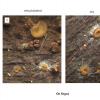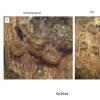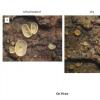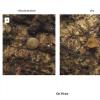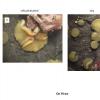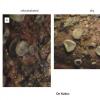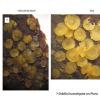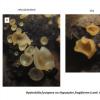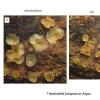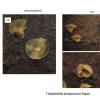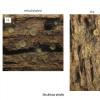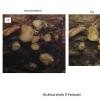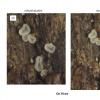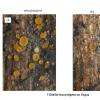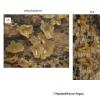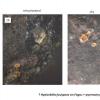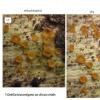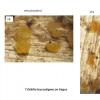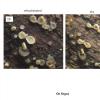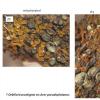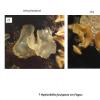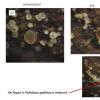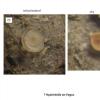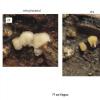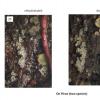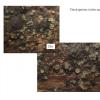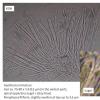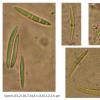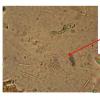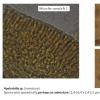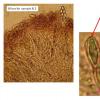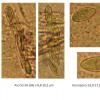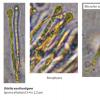
02-01-2026 17:43
MARICEL PATINOHi there, although I couldn't see the fruitbody, I

01-01-2026 18:35
Original loamy soil aside a artificial lake.The co

31-12-2025 19:27
Collected from loamy soil, at waterside (completel

30-12-2025 16:44
Pascal DucosBonjour,Une anamorphe rose stipitée, très nombre

30-12-2025 17:14
 Bernard CLESSE
Bernard CLESSE
Bonjour à toutes et tous,Pourriez-vous aider Albe
Orbilia/Hyalorbilia
Alex Akulov,
01-07-2011 23:21
 Dear colleagues
Dear colleaguesBelow are pictures of some samples of Orbiliaceous fungi.
Please advise me which of them - are trivial, and which samples should pay more attention in the nearest future. To overview quickly about 400 packages is hardly succeed, so I want not to waste time on simple species :-)
Thanks in advance,
Alex
Stip Helleman,
02-07-2011 20:45

Re : Orbilia/Hyalorbilia
Hi Alex,
first 5 & 6 & 24 look Mollisioid to me, 12 can be Pezicula but you should test microscopy, asci IKI red and rather large multiseptate spores, if not also Mollisioid.
25 1 Hyalorbilia and 2 Hyaloscypha, 13 Hyaloscypha too, if hairs blunt and with resin, asci arising from croziers - aureliella the most common one on Coniferous wood.
among the rest is a lot of inflatula or fusispora.
cheers.
Stip
first 5 & 6 & 24 look Mollisioid to me, 12 can be Pezicula but you should test microscopy, asci IKI red and rather large multiseptate spores, if not also Mollisioid.
25 1 Hyalorbilia and 2 Hyaloscypha, 13 Hyaloscypha too, if hairs blunt and with resin, asci arising from croziers - aureliella the most common one on Coniferous wood.
among the rest is a lot of inflatula or fusispora.
cheers.
Stip
Alex Akulov,
03-07-2011 18:12
Alex Akulov,
03-07-2011 21:20
Hans-Otto Baral,
03-07-2011 21:53

Re : Orbilia/Hyalorbilia
I assume you have a mixture here: the macro probably shows Hyalorbilia inflatula, but the spores look for me like belonging to Orbilia aurantiorubra (an orange-red fungus).
Zotto
Zotto
Hans-Otto Baral,
03-07-2011 22:00

Re : Orbilia/Hyalorbilia
I also think you have mainly H. inflatula: 1 3-4 8-10 15 16 (why fusispora?), 21
perhaps 11 is worth to check, or is also inflatula, likewise 23 or 25
and O. leucostigma (= delicatula): 7 14 17 18 20
22 is difficult to say because only 1 apo
Microscopy is now quite worse because you dried your specimens. Much better would have been to keep them fresh, but I know it is difficult with so many samples.
Zotto
perhaps 11 is worth to check, or is also inflatula, likewise 23 or 25
and O. leucostigma (= delicatula): 7 14 17 18 20
22 is difficult to say because only 1 apo
Microscopy is now quite worse because you dried your specimens. Much better would have been to keep them fresh, but I know it is difficult with so many samples.
Zotto
Alex Akulov,
03-07-2011 22:51

Re : Orbilia/Hyalorbilia
Dear Zotto
Thank you for help! Comparing the data about samples, your comments to them, as well as files with descriptions of species that you have provided, I began to understand a little bit. I'm still familiar with discomycetes unsufficient, but would like to know more about them.
Can I ask you to send my file with your publication "Monographic revision of Gelatinopsis and Calloriopsis"?
Please tell me where were published the data about synonymy of names O. delicatula, O. xanthostigma and Orbilia leucostigma? In Mycobank and Index Fungorum indicated that there are three separate species.
Tomorrow morning I will try to overlook samples N 11, 22, 23 and 25.
Grateful before,
Alex
Thank you for help! Comparing the data about samples, your comments to them, as well as files with descriptions of species that you have provided, I began to understand a little bit. I'm still familiar with discomycetes unsufficient, but would like to know more about them.
Can I ask you to send my file with your publication "Monographic revision of Gelatinopsis and Calloriopsis"?
Please tell me where were published the data about synonymy of names O. delicatula, O. xanthostigma and Orbilia leucostigma? In Mycobank and Index Fungorum indicated that there are three separate species.
Tomorrow morning I will try to overlook samples N 11, 22, 23 and 25.
Grateful before,
Alex
Stip Helleman,
03-07-2011 23:39

Re : Orbilia/Hyalorbilia
Hi Alex,
you should have the Gelatinopsis file from me already.
n12 is clearly no Pezicula, about the larger spores i think they are the few ones that are still alive because they still have their oil guttulation pattern.
cheers,
Stip
you should have the Gelatinopsis file from me already.
n12 is clearly no Pezicula, about the larger spores i think they are the few ones that are still alive because they still have their oil guttulation pattern.
cheers,
Stip
Hans-Otto Baral,
04-07-2011 12:28

Re : Orbilia/Hyalorbilia
Hi Alex
I think the Gelatinopsis paper is on my DVD, do you have the DVD?
The synonymy of the three Orbilias you mention will be publshed in our monograph. Ellis & Ellis separate between the white (leucostigma) and yellow form, but there is hardly any reason to do so, because the microscopy is the same, and I have cases where both grow densely intermingled, though this is not a proof, I admit.
These names have been applied in very different senses. We lectotypify O. leucostigma because it is the type species of Orbilia, and abandon to use xanthostigma, for which we so far do not intend to make a lectotypification (it will become a nomen dubium).
Zotto
I think the Gelatinopsis paper is on my DVD, do you have the DVD?
The synonymy of the three Orbilias you mention will be publshed in our monograph. Ellis & Ellis separate between the white (leucostigma) and yellow form, but there is hardly any reason to do so, because the microscopy is the same, and I have cases where both grow densely intermingled, though this is not a proof, I admit.
These names have been applied in very different senses. We lectotypify O. leucostigma because it is the type species of Orbilia, and abandon to use xanthostigma, for which we so far do not intend to make a lectotypification (it will become a nomen dubium).
Zotto




